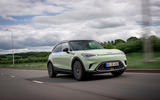The new CEO of Smart UK, David Browne, is attempting to answer a question about market positioning: what will the newly reborn brand be in every category it enters?
The question requires distilling the brand to its core essence and is a way to discover if the management team has a clear idea of what Smart’s new purpose is.













Add your comment